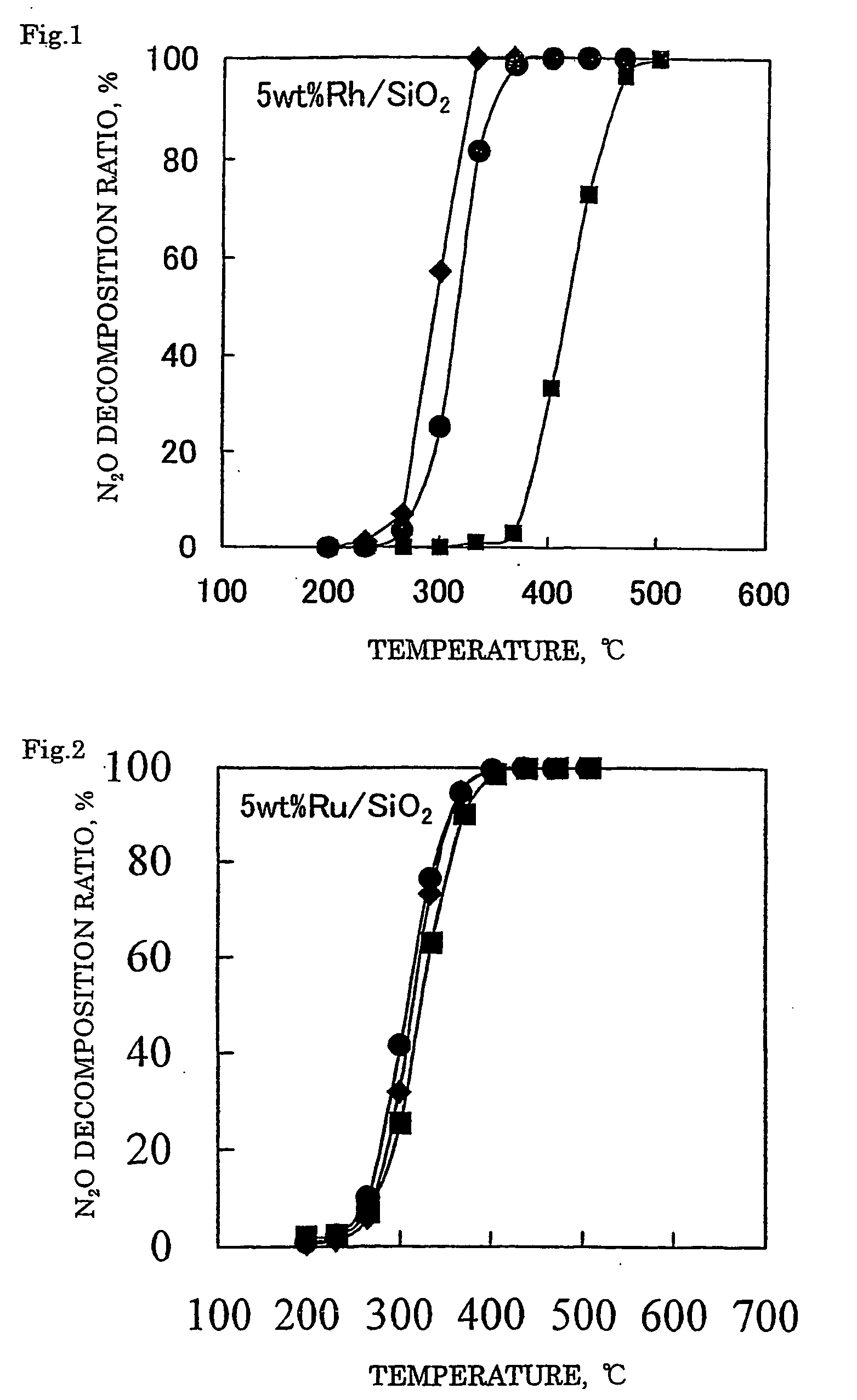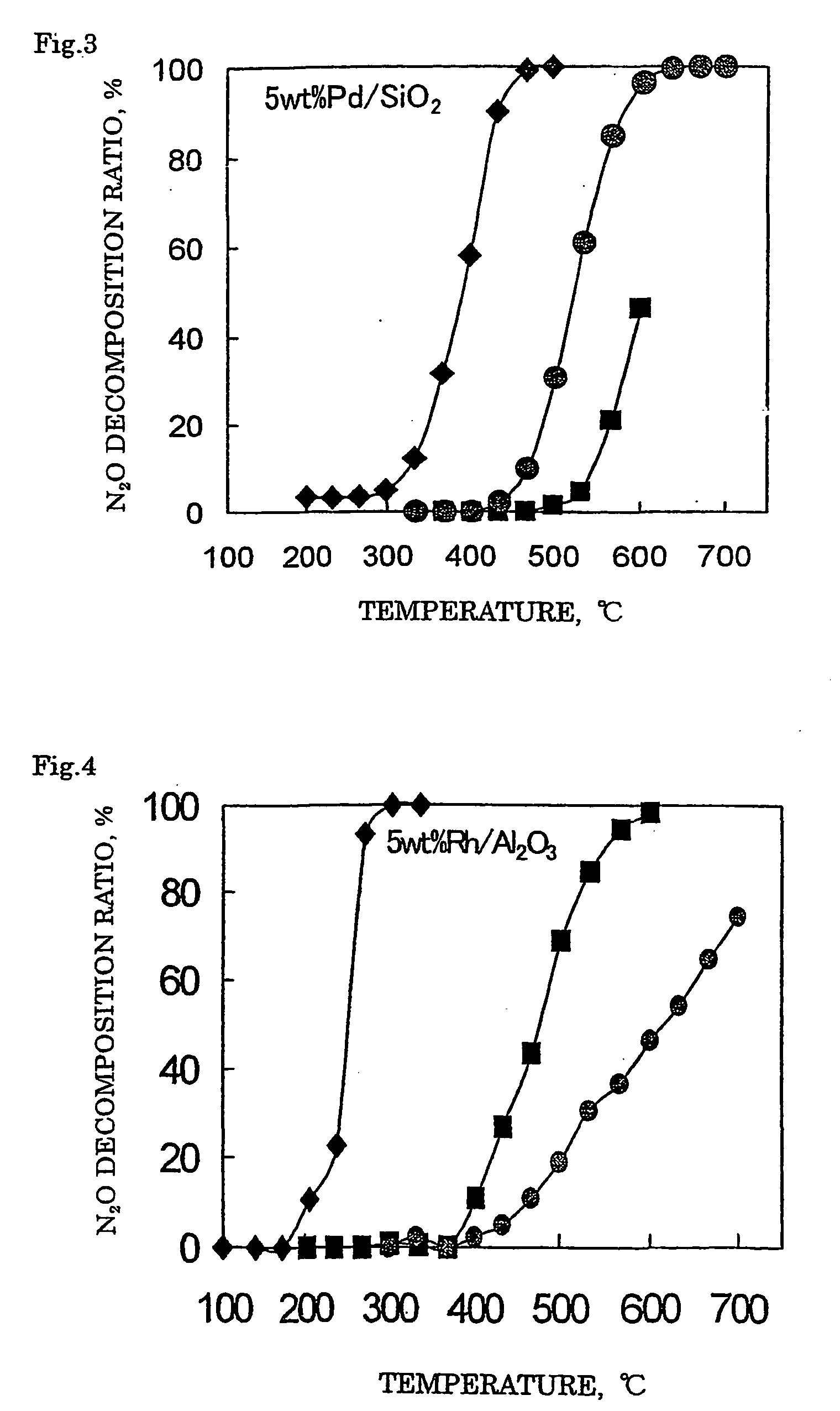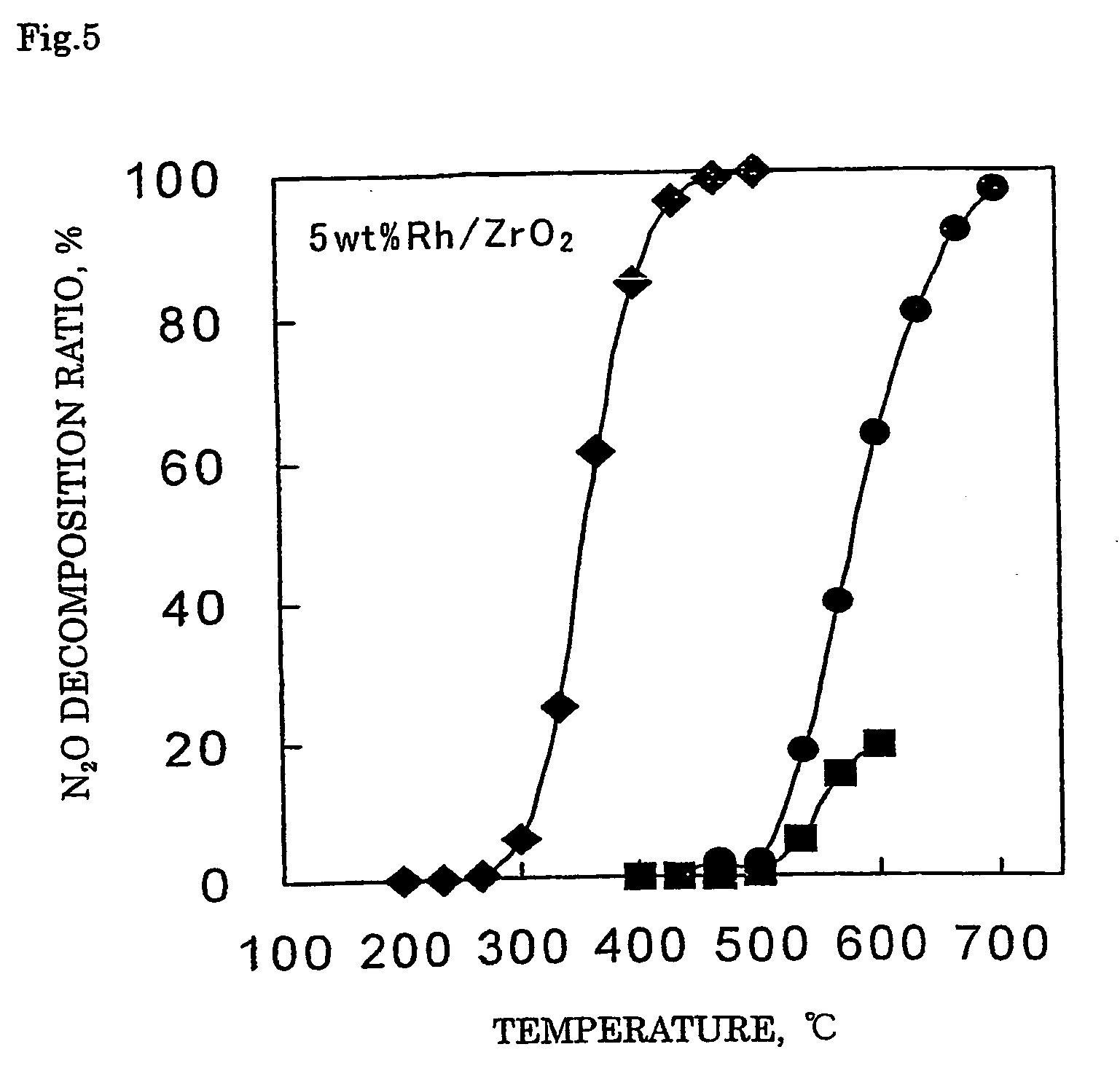Decomposition catalyst for nitrous oxide, process for producing the same and process for decomposing nitrous oxide
- Summary
- Abstract
- Description
- Claims
- Application Information
AI Technical Summary
Benefits of technology
Problems solved by technology
Method used
Image
Examples
example 1
Preparation of Catalyst
[0112] With 1.84 g of distilled water, 1.32 g of a 21.4% rhodium nitrate solution (Rh(NO3)3 aq.) was mixed. Thereto, 2.04 g of silica support (JRC-SIO-4, see Nippon Shokubai Gakkai, Shokubai (Catalyst)) was added and after the entire amount was impregnated, the support was dried up in a hot bath at 90° C. The obtained support was dried in air at 110° C. for 12 hours and then subjected to a calcination treatment at 650° C. for 2 hours to obtain a catalyst 1 where 5% by mass of rhodium (Rh) was supported on a silica support.
example 2
Preparation of Catalyst
[0113] A catalyst 2 was prepared in the same manner as in Example 1 except for using 0.99 g of a 31.4% ruthenium nitrosyl nitrate solution (Ru(NO)(NO3)3 aq.). In the catalyst 2 obtained, 5% by mass of ruthenium (Ru) was supported on the silica support.
example 3
Preparation of Catalyst
[0114] A catalyst 3 was prepared in the same manner as in Example 1 except for using 0.43 g of a 52.2% palladium nitrate solution (Pd(NO3)3 aq.). In the catalyst 3 obtained, 5% by mass of palladium (Pd) was supported on the silica support.
PUM
| Property | Measurement | Unit |
|---|---|---|
| Temperature | aaaaa | aaaaa |
| Temperature | aaaaa | aaaaa |
| Percent by mass | aaaaa | aaaaa |
Abstract
Description
Claims
Application Information
 Login to View More
Login to View More - R&D
- Intellectual Property
- Life Sciences
- Materials
- Tech Scout
- Unparalleled Data Quality
- Higher Quality Content
- 60% Fewer Hallucinations
Browse by: Latest US Patents, China's latest patents, Technical Efficacy Thesaurus, Application Domain, Technology Topic, Popular Technical Reports.
© 2025 PatSnap. All rights reserved.Legal|Privacy policy|Modern Slavery Act Transparency Statement|Sitemap|About US| Contact US: help@patsnap.com



